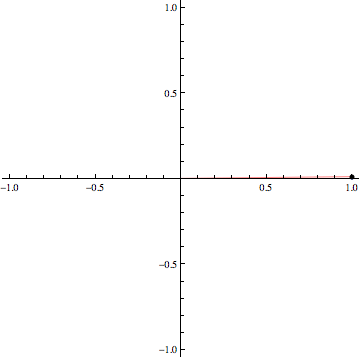We started class with a first example of integrating over a
surface. As part of this, we needed to describe the surface in terms
of a chosen coordinate system and then work out an expression for the
area element of the surface in that coordinate system. For the
first example, the surface was a sphere and we were able to use a
geometric argument to deduce an expression for the area element in
spherical coordinates. We will develop a more general approach for more
general situations. As part of that, we will use a new tool called the
cross product of two vectors.
In the latter part of class, we defined the cross product of two
vectors. The cross product of \(\vec{u}\) and \(\vec{v}\) is a new
vector denoted \(\vec{u}\times\vec{v}\) and defined geometrically in
relationship to the parallelogram that has \(\vec{u}\) and \(\vec{v}\) as
its edges. Specfically, \(\vec{u}\times\vec{v}\) is defined geometrically
by these two properties:
- The direction of \(\vec{u}\times\vec{v}\) is perpendicular to the
\(\vec{u}\vec{v}\)-parallelogram so that
\(\{\vec{u},\vec{v},\vec{u}\times\vec{v}\}\) has a right-hand
orientation.
- The magnitude of \(\vec{u}\times\vec{v}\) is the area of the
\(\vec{u}\vec{v}\)-parallelogram.
From this definition, it is straightforward to work out the cross
product for each pair of the unit coordinate vectors \(\hat\imath\),
\(\hat\jmath\), \(\hat k\). For example, \(\hat
k\times\hat\imath=\hat\jmath\). Algebraic properties of the cross product
include
| anticommutative property: |
\(\vec{u}\times\vec{v}=-\vec{v}\times\vec{u}\) |
| distributive property: |
\(\vec{u}\times(\vec{v}+\vec{w})
=\vec{u}\times\vec{v}+\vec{u}\times\vec{w}\) |
| scalar factor property: |
\(\alpha(\vec{u}\times\vec{v})=(\alpha\vec{u})\times\vec{v}
=\vec{u}\times(\alpha\vec{v})\) |
Using these properties and results for crossing pairs of unit
coordinate vectors, we can compute the cross product of any two vectors
in terms of their cartesian components.
In Section 10.4 of the text, the authors show another way of computing
cross products that uses determinants. You can ignore that method
if you wish (particularly if you have not seen previously seen
determinants.)
Exam 3 is scheduled for Tuesday November 13. As
usual, you may use the entire 80 minute block of time and not just the 50
minutes we normally meet on Tuesday. The exam will cover the material in
sections 12.7, 13.1-13.5, 13.7, the handout on integrating over curves,
and the various handouts on non-uniform density (linear, area, volume), and integrating over curves.
Note that neither the material on Lagrange multipliers (section 12.8) nor
the material on cross products (section 10.4) is included on this exam.
Here is the Exam
Objectives handout.
